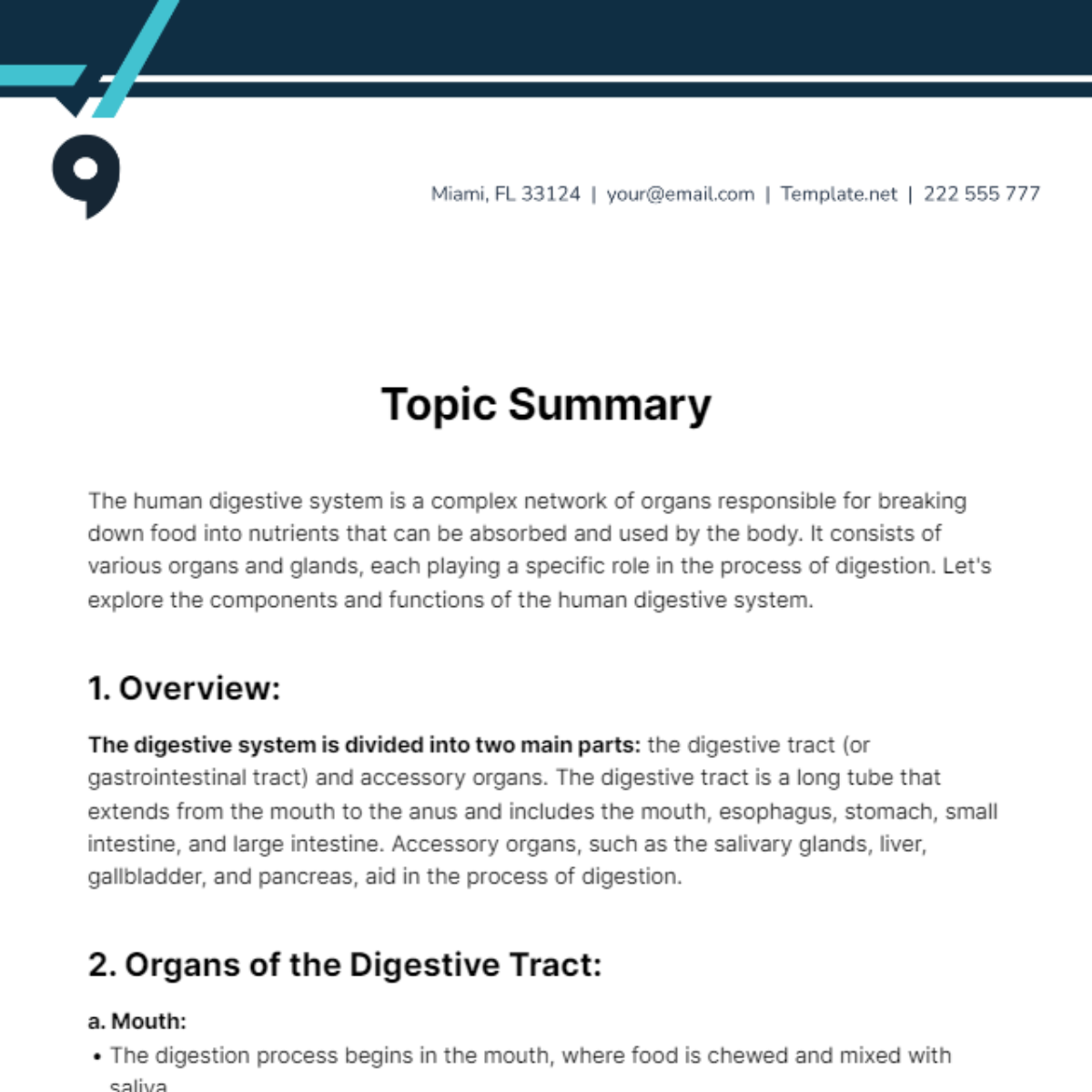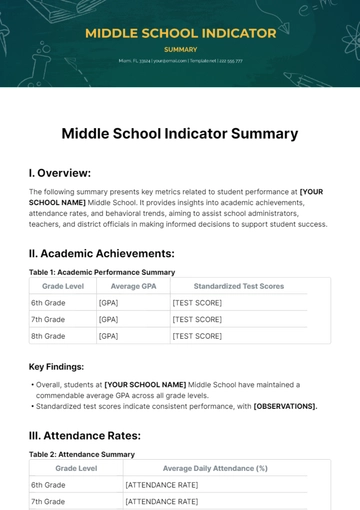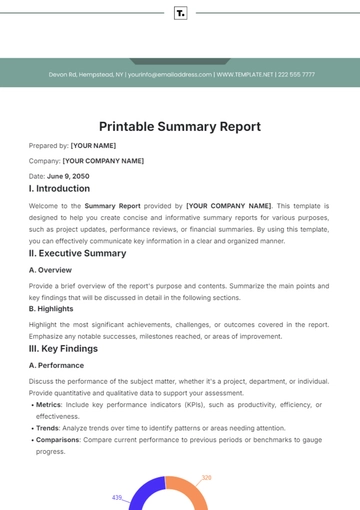Topic Summary
The human digestive system is a complex network of organs responsible for breaking down food into nutrients that can be absorbed and used by the body. It consists of various organs and glands, each playing a specific role in the process of digestion. Let's explore the components and functions of the human digestive system.
1. Overview:
The digestive system is divided into two main parts: the digestive tract (or gastrointestinal tract) and accessory organs. The digestive tract is a long tube that extends from the mouth to the anus and includes the mouth, esophagus, stomach, small intestine, and large intestine. Accessory organs, such as the salivary glands, liver, gallbladder, and pancreas, aid in the process of digestion.
2. Organs of the Digestive Tract:
a. Mouth:
The digestion process begins in the mouth, where food is chewed and mixed with saliva.
Saliva, produced by the salivary glands, contains enzymes (such as amylase) that begin the breakdown of carbohydrates.
b. Esophagus:
The esophagus is a muscular tube that transports food from the mouth to the stomach through a series of coordinated muscle contractions called peristalsis.
c. Stomach:
The stomach is a muscular organ that stores and churns food, mixing it with gastric juices containing hydrochloric acid and enzymes (such as pepsin) that break down proteins.
The stomach lining secretes mucus to protect itself from the acidic environment.
d. Small Intestine:
The small intestine is where most of the digestion and absorption of nutrients occur.
It is divided into three parts: the duodenum, jejunum, and ileum.
Enzymes from the pancreas and bile from the liver aid in the digestion of fats, proteins, and carbohydrates.
Villi and microvilli in the lining of the small intestine increase surface area for nutrient absorption into the bloodstream.
e. Large Intestine:
The large intestine absorbs water and electrolytes from undigested food, forming feces.
It consists of the cecum, colon (including the ascending, transverse, descending, and sigmoid colon), rectum, and anus.
Beneficial bacteria in the large intestine aid in the fermentation of undigested carbohydrates and the synthesis of certain vitamins.
3. Accessory Organs:
a. Liver:
b. Gallbladder:
c. Pancreas:
The pancreas secretes digestive enzymes (such as amylase, lipase, and proteases) into the small intestine to further break down carbohydrates, fats, and proteins.
4. Importance of Digestion:
"Understanding the significance of digestion is crucial for [TARGET AUDIENCE] to [ACTION OR BENEFIT]. A well-maintained digestive system is vital for [DESIRED OUTCOME], ensuring efficient absorption of nutrients and elimination of waste. Incorporating [RELEVANT ACTION/PRACTICE] supports optimal digestion, promoting overall health and well-being."
Conclusion
In conclusion, the human digestive system is a remarkable and intricate system responsible for processing food and extracting nutrients essential for life. Understanding its structure and functions helps us appreciate the complexities of our bodies and the importance of maintaining digestive health.
Summarized By: [YOUR NAME]
Summary Templates @ Template.net






























